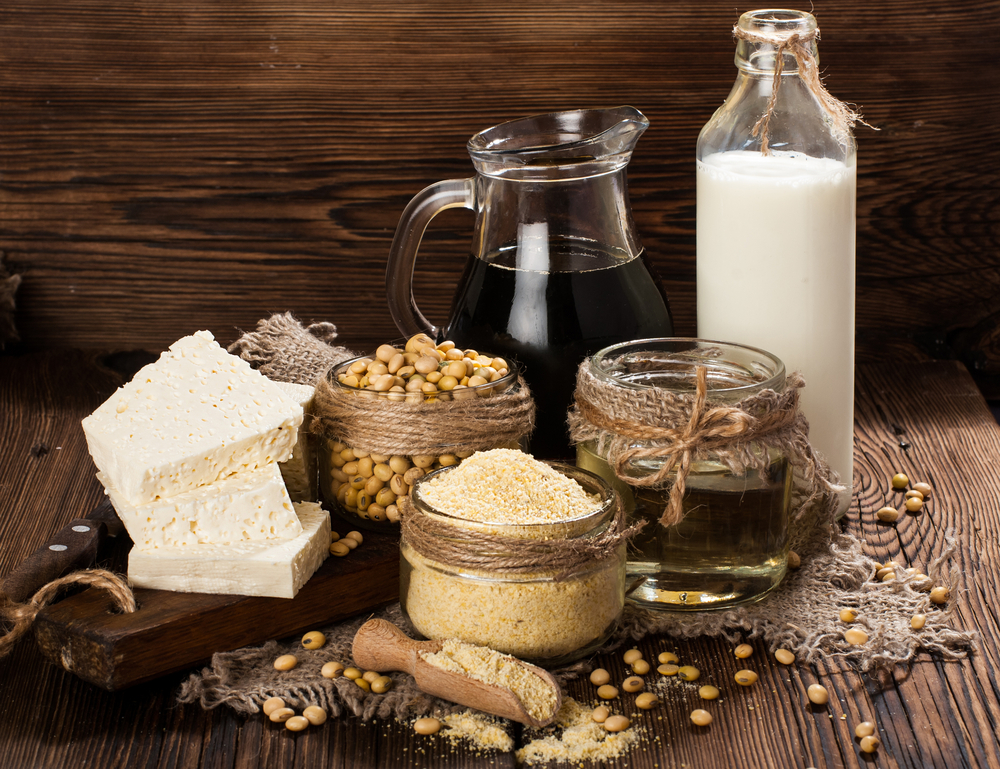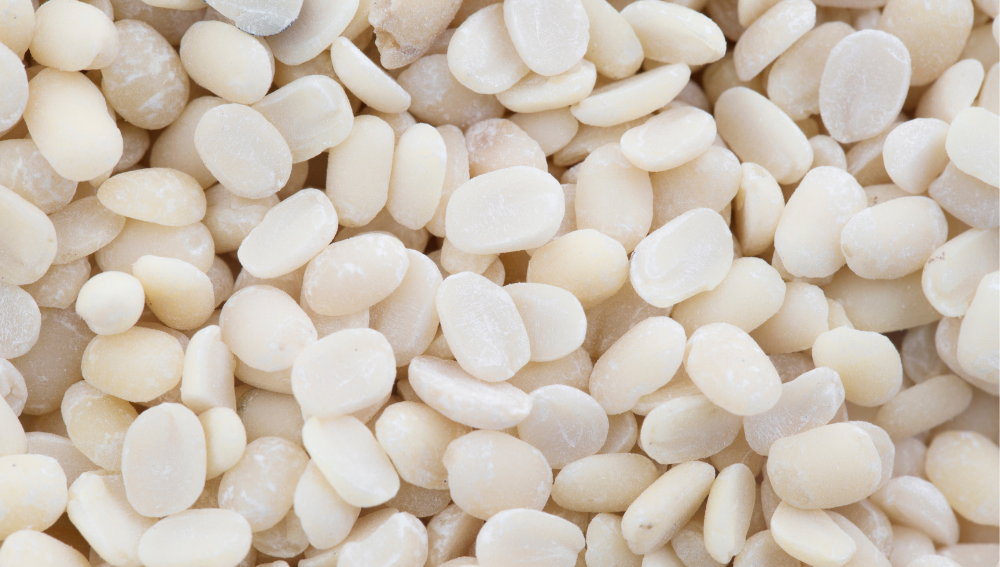Substitutes for gram flour are essential for those who want to make gluten-free dishes or who simply don’t have any gram flour in their pantry. Gram flour, also known as besan, is a flour made from ground chickpeas and is commonly used in Indian, Pakistani, and Bangladeshi cuisines.
It has a nutty flavor and a slightly coarse texture. However, there are many substitutes for gram flour that can be used in its place.
Understanding the different types of gluten-free substitutes for gram flour is important when cooking for those with dietary restrictions. Chickpea flour, which is made from ground white chickpeas, is often confused with gram flour but has a coarser texture that works well in fritters, veggie burgers, pancakes, and waffles.
Other gluten-free substitutes include rice flour, corn flour, and lentil flour. However, it’s important to note that each substitute has its unique taste and texture, so it’s crucial to experiment with different substitutes to find the right one for your dish.
Key Takeaways
- Substitutes for gram flour are essential for gluten-free cooking or when gram flour is not available.
- Chickpea flour, rice flour, corn flour, and lentil flour are some of the gluten-free substitutes for gram flour.
- It’s important to experiment with different substitutes to find the right one for your dish.
Understanding Gram Flour
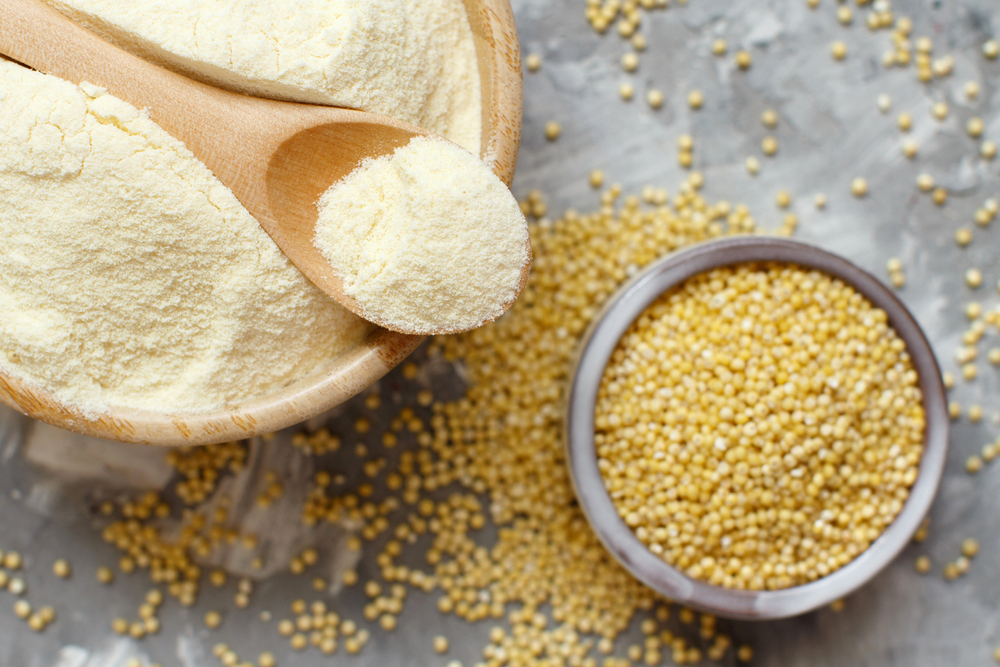
Gram flour, also known as besan or besan flour, is a versatile flour that is commonly used in Indian and Asian cuisines. Made from ground chickpeas, gram flour is gluten-free and has a nutty flavor that adds a unique taste to dishes.
This section will provide an overview of gram flour, including its nutritional profile, culinary uses, and health benefits.
Nutritional Profile
Gram flour is a rich source of nutrients, including fiber, carbohydrates, vitamins, and minerals. One cup of gram flour contains approximately:
- 356 calories
- 20 grams of protein
- 53 grams of carbohydrates
- 10 grams of fiber
- 2 grams of fat
In addition, gram flour is a good source of iron and magnesium, which are essential minerals for maintaining a healthy body.
Culinary Uses
Gram flour is a versatile ingredient that can be used in a variety of dishes, including pakoras, onion bhaji, paratha, and roti. It is commonly used as a thickener for curries and gravies and can also be used to make batter for fried foods. In addition, gram flour can be used as a substitute for wheat flour in gluten-free recipes.
Health Benefits
Gram flour is a nutritious ingredient that offers several health benefits. Its high fiber content helps regulate blood sugar levels and aids in digestion. In addition, gram flour is a good source of protein, which is essential for building and repairing tissues in the body.
It also contains several vitamins and minerals that are important for maintaining overall health.
While gram flour is a healthy ingredient, it is important to note that it is high in carbohydrates and should be consumed in moderation as part of a balanced diet.
Gram Flour Substitutes

If you don’t have gram flour on hand or are looking for a gluten-free alternative, there are several substitutes you can use. Some of the best gram flour substitutes include:
- All-purpose flour
- Rice flour
- Corn flour
- Quinoa flour
- Coconut flour
- Millet flour
- Tapioca flour
- Buckwheat flour
Each of these substitutes has its own unique flavor and texture, so it’s important to experiment to find the best one for your recipe.
Gluten-Free Substitutes
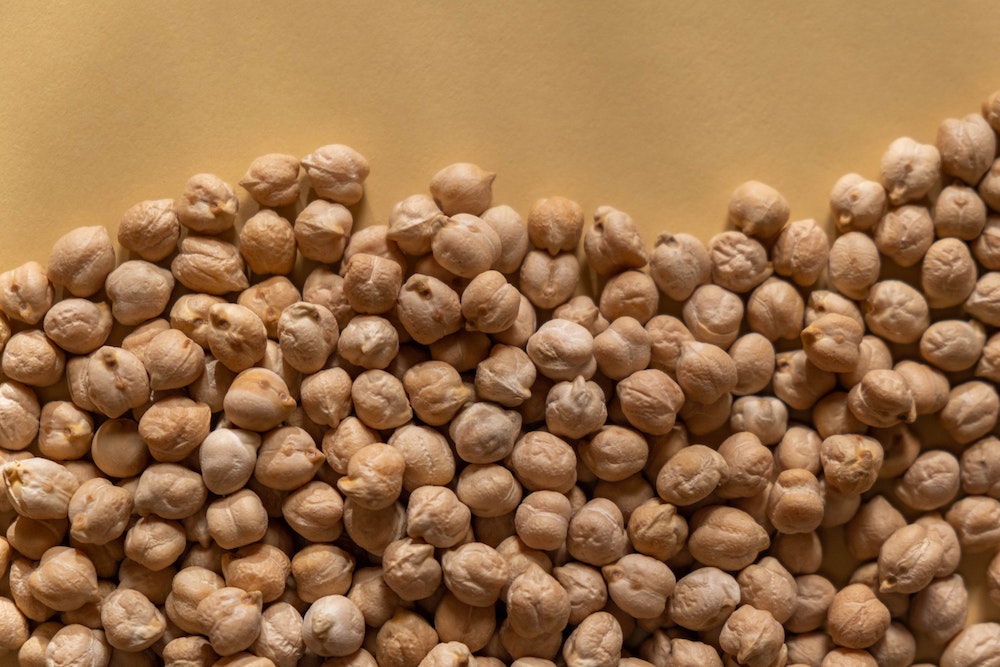
When it comes to substituting gram flour, there are several gluten-free options available. These substitutes can be used in a variety of recipes, from savory to sweet, and offer different nutritional benefits.
Here are some of the most popular gluten-free flours that can be used as substitutes for gram flour:
Chickpea Flour
Chickpea flour, also known as besan, is a popular gluten-free flour that is made from ground chickpeas. It is a great substitute for gram flour as it has a similar nutty flavor and is also high in protein. Chickpea flour can be used in a variety of recipes, including pancakes, fritters, and bread.
Quinoa Flour
Quinoa flour is made from ground quinoa, a gluten-free grain that is high in protein and fiber. It has a nutty flavor and a slightly grainy texture, making it a great substitute for gram flour in recipes that require a similar texture. Quinoa flour can be used in recipes such as muffins, pancakes, and bread.
Rice Flour
Rice flour is a neutral-tasting gluten-free flour that is made from ground rice. It is a great substitute for gram flour in recipes that require a neutral flavor. Rice flour can be used in a variety of recipes, including cakes, cookies, and bread.
Almond Flour
Almond flour, also known as almond meal, is a low-carb, keto-friendly gluten-free flour that is made from ground almonds. It has a nutty flavor and a slightly sweet taste, making it a great substitute for gram flour in sweet recipes. Almond flour can be used in recipes such as cakes, cookies, and muffins.
Coconut Flour
Coconut flour is a low-carb, keto-friendly gluten-free flour that is made from ground coconut meat. It is high in fiber and has a slightly sweet taste, making it a great substitute for gram flour in sweet recipes. Coconut flour can be used in recipes such as cakes, cookies, and muffins.
Cassava Flour
Cassava flour is a gluten-free flour that is made from ground cassava root. It is high in carbohydrates and is a good source of fiber. Cassava flour has a neutral taste and can be used in a variety of recipes, including pancakes, bread, and tortillas.
Overall, these gluten-free substitutes for gram flour offer a variety of nutritional benefits and can be used in a range of recipes. It is important to note that not all recipes will work with every substitute, so it is best to experiment and find the best substitute for each recipe.
Other Flour Substitutes

There are many other flour substitutes that can be used in place of gram flour. Some of the most common ones are wheat flour, corn flour, buckwheat flour, oat flour, spelt flour, soybean flour, and lentil flour.
Each of these flours has its unique flavor, texture, and nutritional profile.
Wheat Flour
Wheat flour is a common flour substitute that is often used in baking. It is made from ground wheat and contains gluten, which makes it a good thickening agent. Whole wheat flour is a healthier option than refined wheat flour because it contains more fiber and nutrients.
Corn Flour
Corn flour is a gluten-free flour substitute that is made from ground corn. It is often used as a thickening agent in recipes and can be used in place of gram flour in many dishes. Cornstarch is another type of corn flour that is commonly used as a thickening agent.
Buckwheat Flour
Buckwheat flour is a gluten-free flour substitute that is made from ground buckwheat. It has a nutty taste and can be used in place of gram flour in many recipes. Buckwheat is also a good source of fiber.
Oat Flour
Oat flour is a gluten-free flour substitute that is made from ground rolled oats. It is often used in baking and can be used in place of gram flour in many recipes. Oat flour is also a good source of fiber.
Spelt Flour
Spelt flour is a flour substitute that is made from ground spelt, which is an ancient grain. It has a nutty flavor and can be used in place of gram flour in many recipes. Spelt flour contains gluten, so it is not suitable for people with gluten intolerance.
Soybean Flour
Soybean flour is a gluten-free flour substitute that is made from ground soybeans. It is a good source of protein and can be used in place of gram flour in many recipes.
Lentil Flour
Lentil flour is a gluten-free flour substitute that is made from ground lentils. It is a good source of protein and fiber and can be used in place of gram flour in many recipes. Lentil flour has a slightly nutty flavor and can be used in both sweet and savory dishes.
Baking with Flour Substitutes

When it comes to baking, substituting gram flour with other options can be challenging. However, with the right knowledge and ingredients, you can create delicious baked goods that are just as good as those made with gram flour.
Here are some flour substitutes that can be used for baking.
Bread and Flatbread
For bread and flatbread, you can use whole wheat flour, all-purpose flour, or a combination of both. Whole wheat flour is a healthier option and adds a nutty flavor to your bread. All-purpose flour is a good substitute for gram flour as it has a similar texture and can be used in equal amounts.
Cakes and Desserts
For cakes and desserts, almond flour, coconut flour, and all-purpose flour are good substitutes for gram flour. Almond flour is a popular option for gluten-free baking and adds a nutty flavor to your cakes.
Coconut flour is also gluten-free and adds a sweet flavor to your desserts. All-purpose flour can be used in equal amounts as gram flour and provides a similar texture.
Pancakes and Waffles
For pancakes and waffles, you can use all-purpose flour, whole wheat flour, or a combination of both. Whole wheat flour adds a nutty flavor and is a healthier option. All-purpose flour provides a similar texture to gram flour and can be used in equal amounts.
Sauces and Soups
For sauces and soups, you can use cornstarch or arrowroot powder as a thickener. Cornstarch is a popular option and provides a smooth texture to your sauces and soups. Arrowroot powder is a healthier option and provides a similar texture.
Burgers and Tacos
For burgers and tacos, you can use all-purpose flour, cornmeal, or almond flour. All-purpose flour provides a similar texture to gram flour and can be used in equal amounts.
Cornmeal adds a crunchy texture to your burgers and tacos. Almond flour is a good option for gluten-free baking and adds a nutty flavor to your burgers and tacos.
Overall, there are many flour substitutes that can be used for baking. Whether you are looking for a gluten-free option or a healthier option, there is a substitute that will work for your needs.
Making Homemade Gram Flour
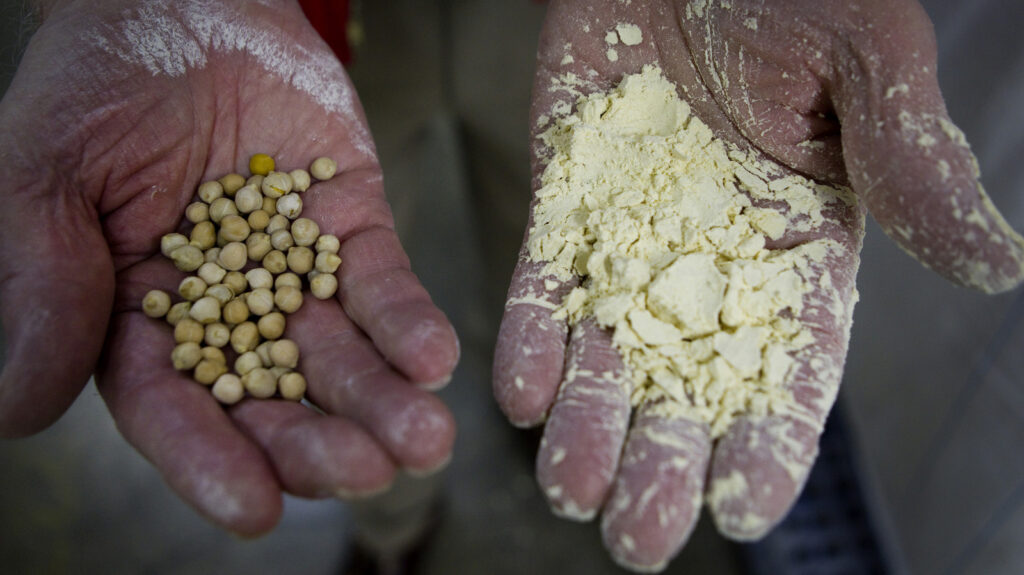
If you can’t find gram flour at your local grocery store, you can easily make it at home using dried chickpeas. Making your own gram flour is not only convenient but also cost-effective.
Here are two methods to make homemade gram flour.
Using a Blender or Food Processor
One way to make homemade gram flour is by using a blender or food processor. Follow these steps:
- Rinse and drain dried chickpeas to remove any debris.
- Spread the chickpeas on a baking sheet and let them dry completely.
- Once dried, add the chickpeas to a blender or food processor and blend until they turn into a fine powder.
- Sift the powder to remove any large pieces.
- Store the gram flour in an airtight container.
Adding Additional Ingredients
Another way to make homemade gram flour is by adding additional ingredients. Follow these steps:
- Rinse and drain dried chickpeas to remove any debris.
- Spread the chickpeas on a baking sheet and let them dry completely.
- Once dried, add the chickpeas to a blender or food processor along with a pinch of salt and baking powder.
- Blend until the chickpeas turn into a fine powder.
- Add a teaspoon of oil to the powder and blend again. This will help to make the gram flour smoother.
- Sift the powder to remove any large pieces.
- Store the gram flour in an airtight container.
It’s important to note that homemade gram flour may not have the same texture and flavor as store-bought gram flour. However, it can be a great substitute in recipes that call for gram flour.
Frequently Asked Questions
What are some good substitutes for gram flour?
There are several good substitutes for gram flour, including rice flour, corn flour, lentil flour, quinoa flour, and tapioca flour. Each of these substitutes has a slightly different texture and taste, so it’s important to choose the one that best suits your needs.
How does rice flour compare to gram flour?
Rice flour is a good substitute for gram flour, as it has a similar texture and is gluten-free. However, rice flour has a milder flavor than gram flour, so it may not be the best choice for recipes that rely on the nutty taste of gram flour.
What is the best alternative to chickpea flour?
If you’re looking for an alternative to chickpea flour, you might consider using lentil flour or fava bean flour. Both of these flours have a similar texture and are high in protein, making them a good substitute for chickpea flour.
Can corn flour be used as a substitute for gram flour?
Yes, corn flour can be used as a substitute for gram flour in many recipes. However, corn flour has a different texture and flavor than gram flour, so it may not be the best choice for all recipes.
Is it possible to use plain flour instead of gram flour?
Yes, plain flour can be used as a substitute for gram flour in many recipes. However, plain flour has a different texture and flavor than gram flour, so it may not be the best choice for all recipes.
What is the difference between gram flour and chickpea flour?
Gram flour and chickpea flour are both made from ground chickpeas, but they are made from different types of chickpeas.
Gram flour is made from ground chana dal, which is a smaller, darker variety of chickpea, while chickpea flour is made from ground kabuli chana, which is a larger, lighter variety of chickpea. Gram flour also has a slightly nuttier flavor than chickpea flour.




